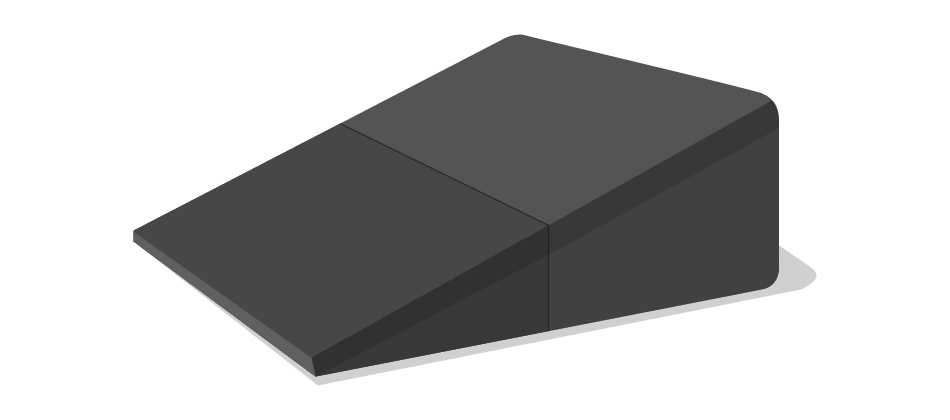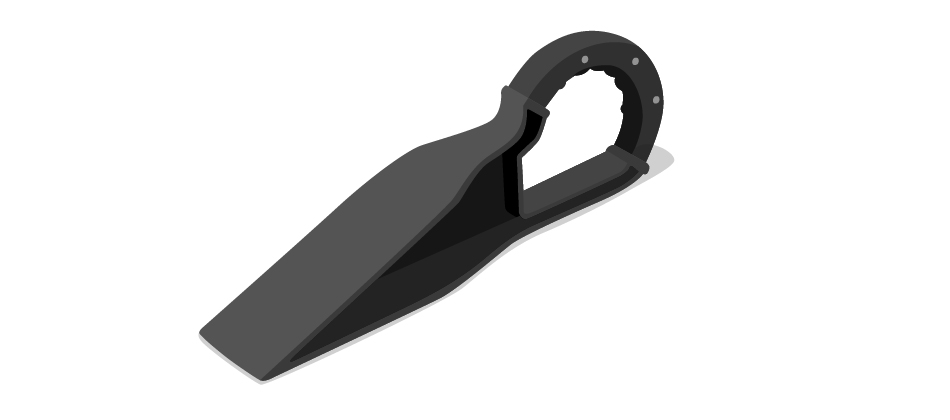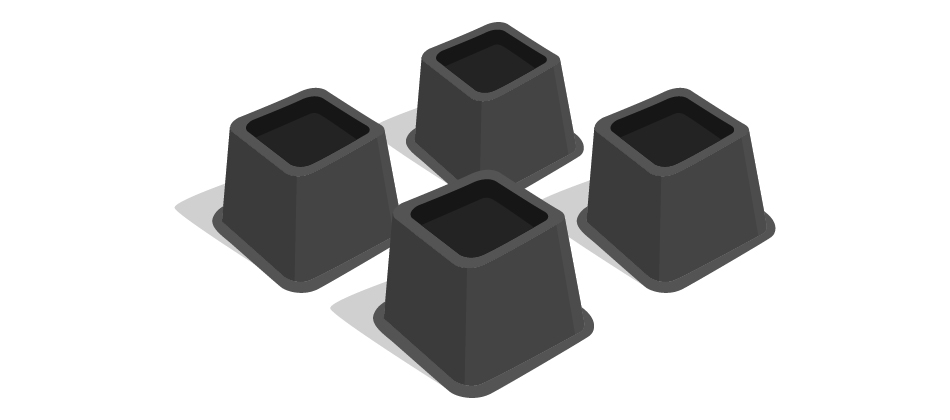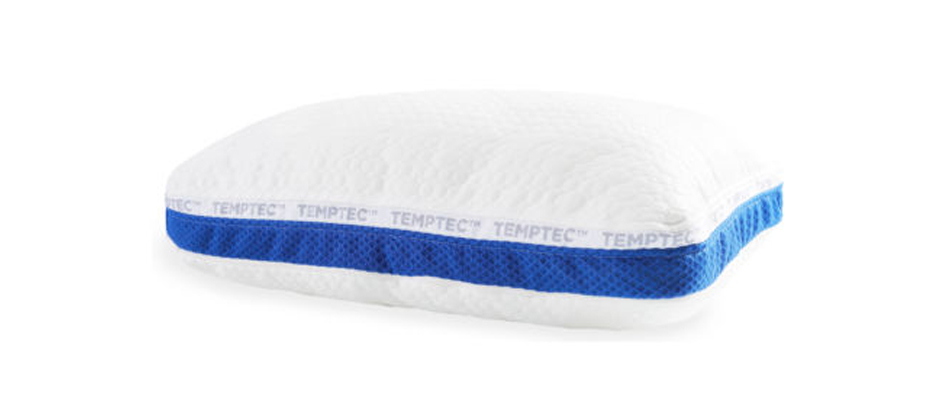Mattresses
SHOP STANDARD SIZES
SHOP STANDARD SIZES
SHOP BY TYPE
SHOP BY BRAND
RV Mattresses
Adjustable Beds
Shop By Brand
Shop By Size
Oversized Beds
Acid Reflux: Elevating Head of Bed
There are quick remedies whenever you find yourself with acid reflux. One of the most common is to elevate the head of the bed. Regardless whether your acid reflux is an event that happens once in a blue moon or is a symptom of gastroesophageal reflux disease (GERD), elevating the head of your bed is an effective and cheap lifestyle change that you can include in addition to other remedies that you use.
Why Elevate the Head of the Bed?
The answer to this question stems from how acid reflux occurs. The tube that brings food and liquids to your stomach is called the esophagus. At the end of the esophagus is a muscular ring called the lower esophageal sphincter (LES). The LES relaxes to allow food and liquids to enter your stomach. It then tightens afterwards. If the LES is weak or does not tighten properly, the acids from your stomach can flow backwards into your esophagus, giving you the “heartburn” that you call when you have an episode of acid reflux. Now that you know how acid reflux occurs, you can go back to the original question: Why elevate the head of the bed? The answer is simple, gravity. By keeping your upper body slightly elevated as you lie down, you allow gravity to have some pull on your stomach acids, keeping them from flowing back into your esophagus.
How to Elevate the Head of the Bed?
There are plenty of ways to elevate the head of the bed from adjustable beds to wedges. Several studies show that an elevation of between 20 to 28 cm has beneficial effects. When choosing the device on elevating the head, try to elevate between 20 to 28 cm.

Symphony Sleep Adjustable Beds
An adjustable bed for acid reflux is a fancier options and the best choice because there are multiple angels this bed can do. The Symphony Sleep bases have an option to raise the upper portion at different angles which is more suitable to relieve your acid reflux.
Shop Adjustable Beds for Acid Reflux

Wedge Pillows
Wedge pillows are exactly what they sound like, a pillow that are in the shape of a wedge. Unlike adjustable beds, you cannot adjust the incline on wedge pillows. Thus, you have to be careful when choosing one, but they are still an effective and simple method to sleep elevated.

Mattress Lifter
Mattress lifters are wedges that you insert in between your mattress and the box spring to lift the mattress. Mattress lifters are handy when changing sheets on large or heavy mattresses. However, you can also keep mattress lifters inserted under the upper portion of your mattress to elevate it.

Bed Risers
As the name suggests, bed risers are like pegs that you put at the bottom of the legs of your bed to raise it. They are useful for tall people or anyone who struggles with getting up from low beds or any furniture for that matter. To elevate the head of your bed, instead of putting the bed risers on all the legs, just put two on the upper legs. Some bed risers have adjustable heights while some are fixed. You also have to consider the size and shape of the legs of the bed since bed risers are basically furniture shoes.
Caution on Bed Risers
There are some cautions that you need to take with bed risers. Take note that if you put bed risers only on the upper two legs, the entire bed and therefore your entire body will be on an incline. Since your bed will be on an incline, it can make the bed unstable. You may also find it difficult to get in and out of bed.

Blocks, Extra Pillows, Etc.
These are basically do-it-yourself methods. If you do not have the budget to buy an adjustable bed, wedge pillows, or bed risers then you can use pretty much anything comfortable to elevate the head of your bed. Use extra pillows, books, blocks, and whatever comes to mind to raise your bed or your upper body as you sleep. As long as you feel comfortable lying on them, then go for it.
Other Reasons to Elevate the Head of the Bed
Besides acid reflux, sleeping with a slight elevation gives benefits in other aspects. Scientists have studied and learned so much of the benefits that the concept of Inclined Bed Therapy was born. As the name suggests, Inclined Bed Therapy is a therapeutic method that involves swapping your conventional flat bed to an incline one.
- Sleep Apnea and Snoring: If you have sleep apnea or if you just tend to snore, then sleeping with your head raised or an inclined bed is something you should try. A study found that this sleeping method may keep your upper airway from collapsing and allowing better breathing while you sleep.2
- Waking Up with a Dry Mouth: Waking up with a dry mouth is a sign that you breathe through your mouth when you are asleep. Although occasionally breathing through your mouth such as during intense exercise is okay, breathing through your nose is still ideal. Nasal breathing offers more advantages than mouth breathing.3 Mouth breathing during sleep is a sign that something is hindering your nasal pathway. Just like with snoring and sleep apnea, sleeping with your head elevated may help clear any obstruction and allow you to breathe through your nose.
- Coughing at Night: Have you ever had your sleep disturbed by a violent cough? This nuisance tends to happen when you have a cold, flu, or other health condition that causes your nose to make more mucus. When you sleep lying down, some of this mucus can drip down the back of your nose to your throat. This situation is called post-nasal drip. When it happens, it can irritate your throat and trigger coughs. Sleeping with your head elevated can help keep post-nasal drip from happening.
- Blood Flow: When you are standing up, your head is above your heart. Your heart must therefore worker harder to pump blood to your head because your heart is working against gravity. In contrast, your heart does not need to pump as hard to send blood to your lower body because gravity pulls the blood down.
When you are lying down, your brain, heart, and lower body are all in line. Less force is needed to pump blood to your head. On the other hand, more force is needed to pump blood to your lower body. However, the heart does not adjust to this. As a result, your brain can receive more blood than it normally does while your lower body can receive less blood. Fluid can build up in both your head and lower body. In particular, pressure and fluid can build up in different areas of your head such as your eyes and sinuses. As a consequence, you can experience migraines, nausea, glaucoma, and other conditions. Sleeping on an incline can slightly simulate being upright and maintain proper blood flow to your head and lower body.
- Brain Detoxification: Toxins such as β-amyloid and tau-proteins are hallmarks in Alzheimer’s Disease. These toxins normally build up in your brain throughout the day. Your body cleans them out when you sleep. This cleaning process is called glymphatic drainage4, and sleeping on an incline promotes glymphatic drainage.
Conclusion
There are pharmacological treatments for acid reflux, but you do not have to rely on drugs to have better health. Simple lifestyle changes can be just as effective. The next time you go to bed, try sleeping on an incline or with your head elevated, and see how it affects you. Even if you do not have acid reflux, the studies that show the benefits of sleeping like this makes it worth a shot.
References
https://pubmed.ncbi.nlm.nih.gov/27250962/
https://www.atsjournals.org/doi/abs/10.1164/ajrccm.155.1.9001312
https://www.healthline.com/health/mouth-breathing#treatment
https://www.ncbi.nlm.nih.gov/pmc/articles/PMC4636982/
© 2025 Rest Right Mattress. All Rights Reserved.


